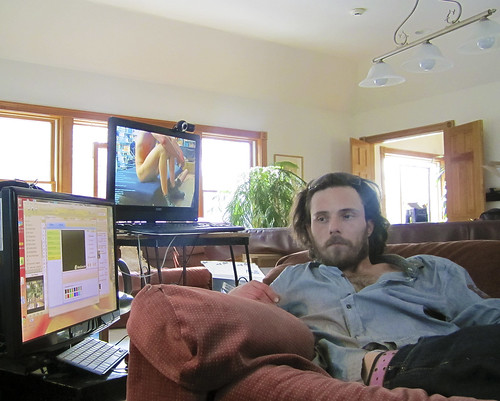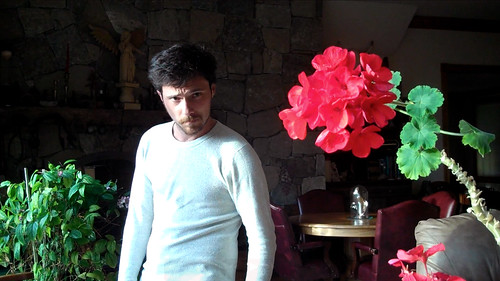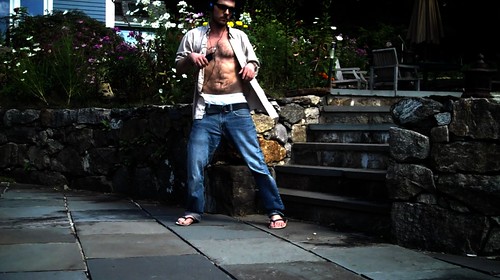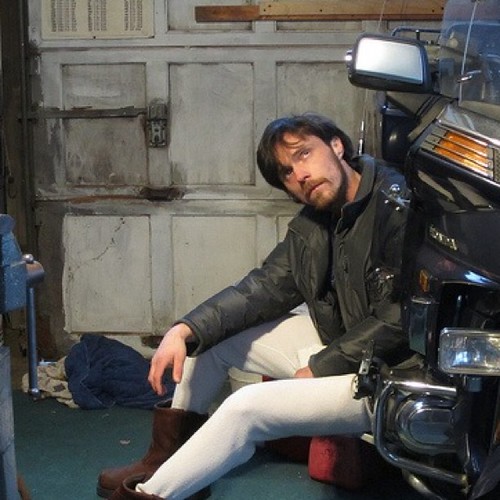Via Flickr:
I know I have been transformed, moved by revelation that human beings create art., That to be an artist is to simply admit that you are one. -Patti Smith
CamUSall Mag - Concept of Self Portraits
The Official Companion Reader for CamUsAll.Com.................#lovethefuture = #freeaiweiweinow
Saturday, September 17, 2011
Chase Alias' Giranium
Thursday, September 15, 2011
Chase Alias', Empty Vessel: A Portrait of Charles , Charlies Closet 1080 P
Chase Alias', Empty Vessel: A Portrait of Charles , Charlies Closet 1080 P a video by Chase Alias :)(: on Flickr.
Via Flickr:
Human natures Origins in the pursuit of happiness stems from our cotinued dependence upon confusion. People seem to look to chaos and confusion for order and eternal truth.
-Chase Alias
Wednesday, September 14, 2011
"What we Found on Craigslist, 2005-2011", Series #11, 2011, Being Chase: A Rare Guest Appearance by Chase at Studio ChaseMe: Chase Alias' Craigslist 2010, Chase Alias photographed by David Pollack

"What we Found on Craigslist, 2005-2011", Series #11, 2011, Being Chase: A Rare Guest Appearance by Chase at Studio ChaseMe: Chase Alias' Craigslist 2010, Chase Alias photographed by David Pollack, a photo by Chase Alias :)(: on Flickr.
Via Flickr:
Just because a man lacks the use of his eyes doesn't mean he lacks vision.
-Stevie Wonder
"What we Found on Craigslist, 2005-2011",
a Digital New Media Group Exhibition featuring the Immersion Art Portraits of:
David S Pollack
Cubby
Chase Alias
Holden Vance III
Currated by and hosted on the Flickr Photostreams of:
Holden Vance III
Chase Alias
This is a constantly updating exhibition that post and updates to Flickr, Twitter, Facebook and other such social networking sites.
The exhibition portraits and characters that are created are actively being used to promote the show on such social networking sites as Craigslist, Manhunt, Adam4Adam and many others.
"What we Found on Craigslist" 2011, is an Immersion Art Work by David S Pollack and it takes it's form as a conceptual New Media Digital Public Sculpture which self updates and constantly changes.
23 photos | 101 views | Add a comment?
items are from between 01 Jan 1980 & 21 Aug 2011.
There is 1 Guest Pass to see this set.
Tuesday, September 13, 2011
Sunday, September 11, 2011
Saturday, September 10, 2011
Thursday, August 18, 2011
"What we Found on Craigslist", Series #8, 2011, Living Room Portrait, Being Chase: Chase Alias' Craigslist 2010, Chase Alias and Dan photographed by Holden Vance III

"What we Found on Craigslist", Series #8, 2011, Living Room Portrait, Being Chase: Chase Alias' Craigslist 2010, Chase Alias and Dan photographed by Holden Vance III, a photo by Chase Alias :)(: on Flickr.
Via Flickr:
Chase relaxes with an old friend after a long day of work....
Affective memory, also known as emotional memory, is an element of Stanislavski's ‘system’ and of Method Acting, two related approaches to acting. Affective memory requires actors to call on personal memories of situations similar (or more recently a situation with similar emotional import) to those of their characters. Stanislavski believed actors needed to take emotion and personality to the stage and call upon it when playing their character. He also explored the use of objectives, the physical body's effect on emotions, and empathiziing with the characters.


























